Morning and Night Skincare Routine for Oily and Acne-Prone Skin
Figuring out how to manage oily and acne-prone skin is not easy. There are so many variables — type of acne, weather, skin sensitivities, noncomedogenic products — to consider. So, it follows that there is no one specific routine that is guaranteed to work for everyone. That being said, there are certain steps that will help keep acne and oiliness at bay, if you are consistent with your skincare. Always remember: skincare is a long-game and forming good, consistent habits and routine is the key to long-term success 🙂
Table of Contents
Cleansing is key for oily, acne-prone skin
The foundation of any skincare routine for acne-prone and oily skin is keeping the skin very clean, so that means having a solid cleansing routine and sticking to it day and night. Acne breakouts tend to happen when dirt (pollution, makeup or sunscreen residue etc) and dead skin cells mix with excess sebum (oil produced from skin glands) to clog pores. That’s why there is a huge emphasis on the cleansing part of these routines. It’s not so much about the products, but the consistency of habit that plays a big role in reducing breakouts and helping with oil-control.
Morning skincare routine for oily and acne-prone skin
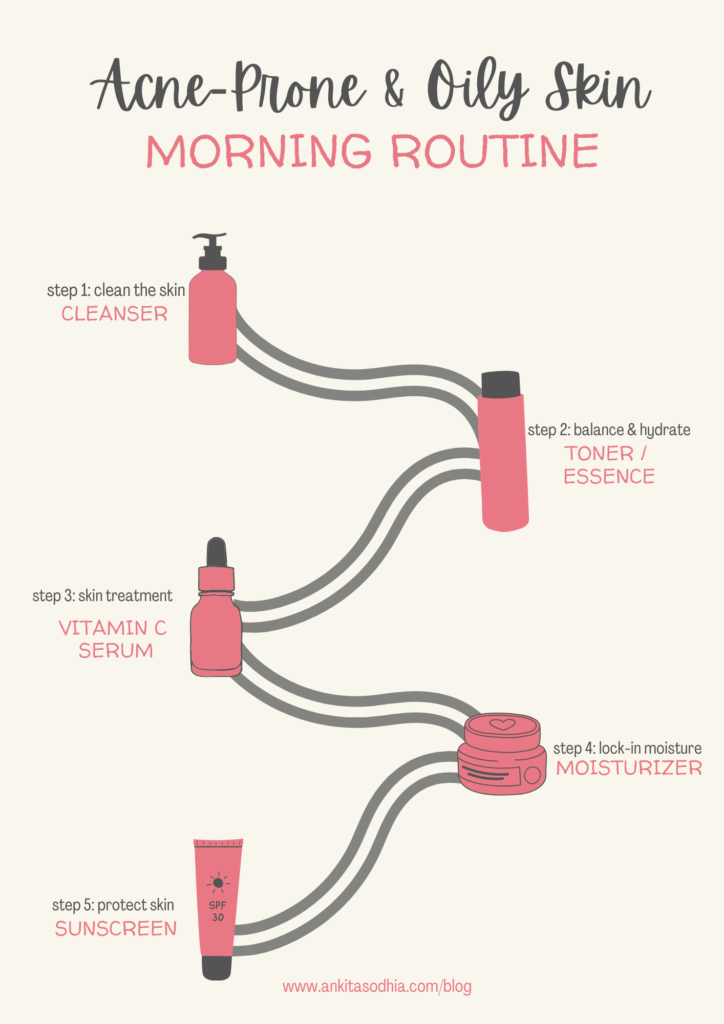
Step 1: Cleanser
Use a face cleanser or face wash such as the Fresh Beauty Soy Cleanser to cleanse skin in the morning.
Step 2: Toner / Essence
Apply a hydrating toner or essence such as the Innisfree Jeju Lava Seawater Essence to hydrate the skin (keeping the skin hydrated is important for skincare to perform well). Look for products with hyaluronic acid, glycerin, niacinamide. If you have excessively oily skin, then you can skip this step.
Step 3: Vitamin C Serum
Pat on a vitamin C serum such as the Dear, Klairs Fresh Juiced Vitamin Drop to reduce post-inflammatory hyperpigmentation (PIH) from acne scars and brighten skin.
Step 4: Moisturizer
Use an oil-free lightweight formula such as a gel-based or water gel moisturizer (the Neutrogena Hydroboost line is great) to lock-in all the moisture and protect the skin’s barrier. Don’t skip moisturizer for the fear that it will make “oily skin more oily” — it’s a myth.
Step 5: Sunscreen
End every morning routine with generous amount of sunscreen SPF 30 ore higher on the face, especially if you are using any kind of acne treatment such as BHAs and retinol because these treatments do make the skin more sensitive to the sun. So, sun protection is absolutely key to ensuring the acne treatments work and protecting overall skin health. Here’s a caveat with sunscreens: some do cause breakouts because they can clog pores, so look for oil-free, paraben-free and fragrance-free sunscreen formulas (I’ve been loving the Live Tined Hueguard SPF 30).
Related:
Korean Skincare Tips for Acne-Prone SkinL
Why You Need A Vitamin C Serum In Your Morning Skincare Routine — And Beginner Tips To Get Started
I Found The Perfect Mineral Face Sunscreen For Medium To Dark Skin — And It Has No White Cast!
Nighttime skincare routine for oily and acne-prone skin
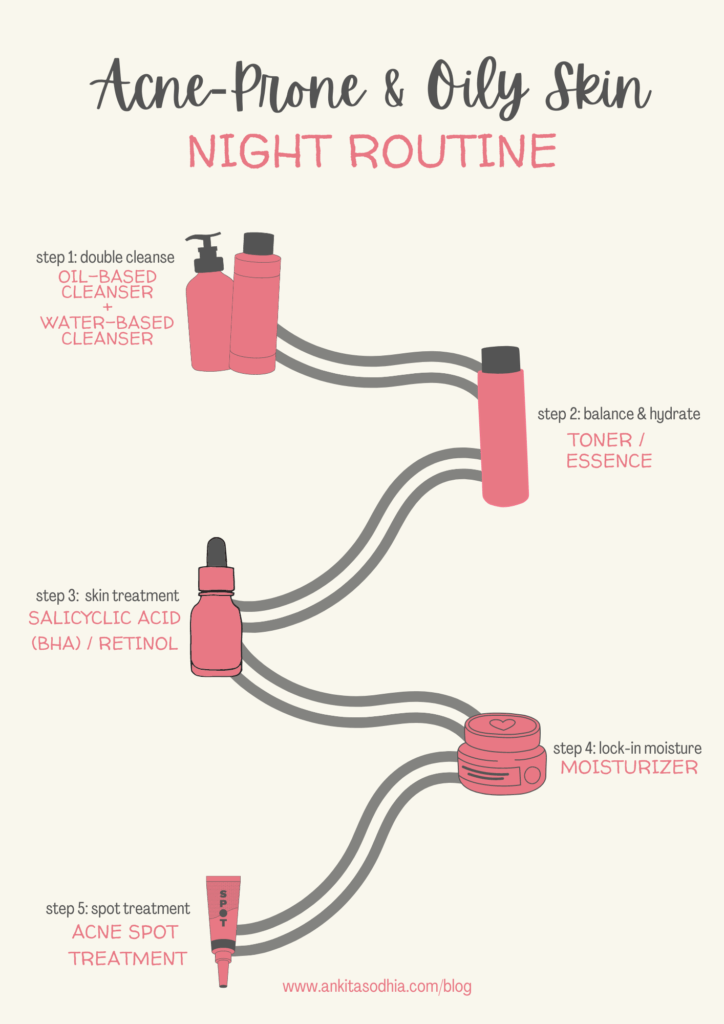
Step 1: Double cleanse
Use a gentle cleansing oil or balm (don’t worry — just because it says “oil” or “oil-based” doesn’t mean it will make your skin oily / more acne-prone) to remove dirt, makeup, SPF etc. Look for something with effective ingredients for acne-prone and oily skin types such as rice water, green tea, plant extracts and formulated without mineral oils. I highly recommend Tatcha The Camellia Cleansing Oil.
Follow up with a second cleanse using a gentle face wash or cleans for acne-prone and oily skin to ensure any leftover dirt and makeup residue is removed.
Step 2: Toner / Essence
Apply a hydrating toner or essence, if you feel you need it. This is not a mandatory, but a “good-to-have” step in the nighttime routine.
Step 3: Skin Treatments
Use skin treatments that target acne-prone and oily skin concerns. You can use different kinds of serums with active ingredients to target specific issues:
- BHAs (Salicyclic acid) go deep under the skin’s surface into the pores to cut through and remove excess oil. They also have have antibacterial and anti-inflammatory properties to help control acne breakouts and oily skin.
- Retinol helps to unclog pores and repair skin to improve skin texture and scars.
- AHAs (Glycolic acid) exfoliate the surface of the skin to remove dead skin cells and dirt to clear pores and even out skin texture.
Related:
Skin treatments contain powerful active ingredients that do make your skin more sensitive, so it is important to do your research and use them with caution. They are not to be used every day and mixed in the same skincare routines. Start with once a week and build up tolerance. If you are using more than one treatment, then alternate the days on which you use them.
Depending on the severity of the acne and oiliness, you will have to experiment and figure out what combination of treatments work — and don’t work — for you. Seek a dermatologist or doctor’s advice before using any new treatments on your skin.
Step 4: Moisturizer
Skin treatments can be drying and sensitizing on the skin, especially if you are using them for the first time, so it’s vital to use a moisturizer after to protect the skin.
Step 5: Spot Treatment
Use a spot treatment at night and after moisturizer.

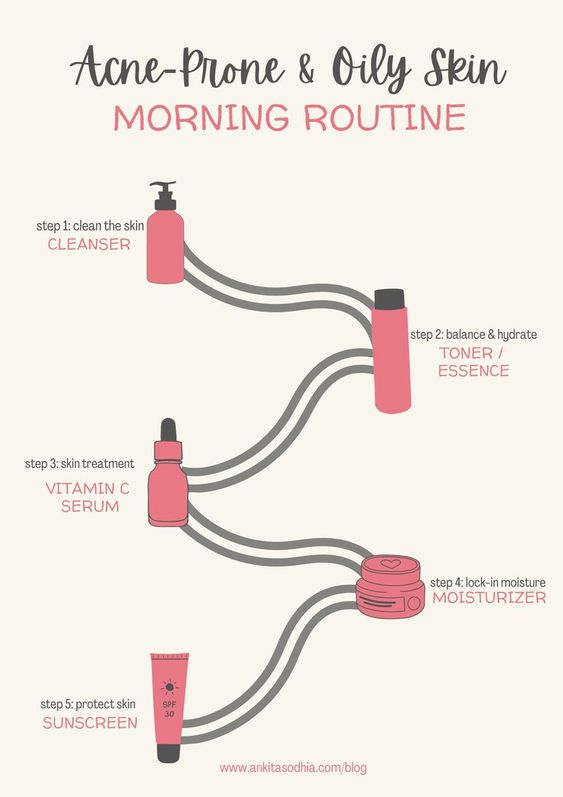
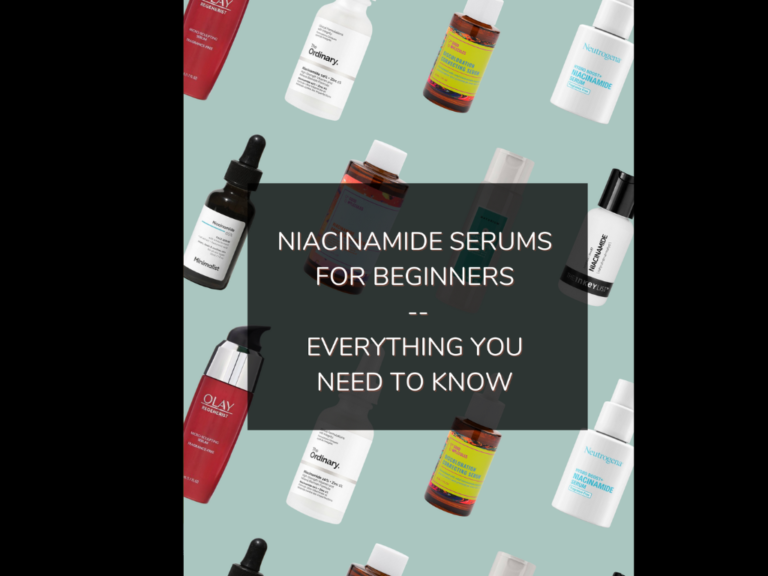
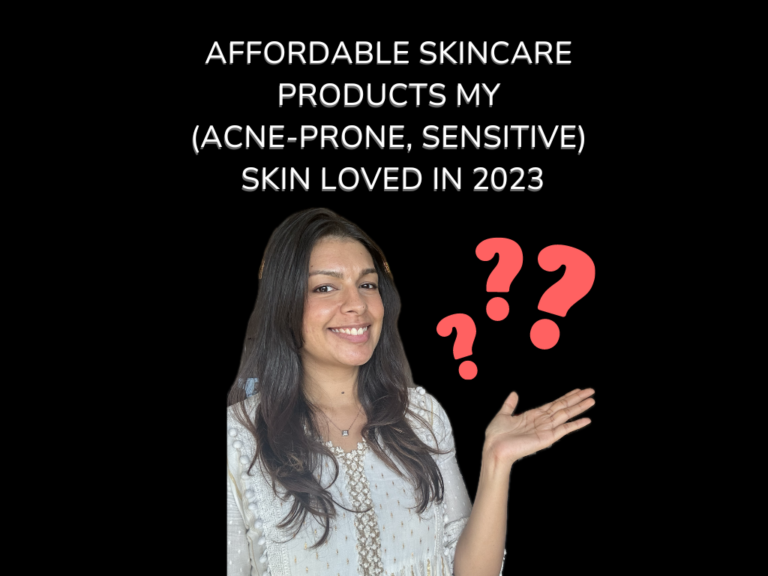
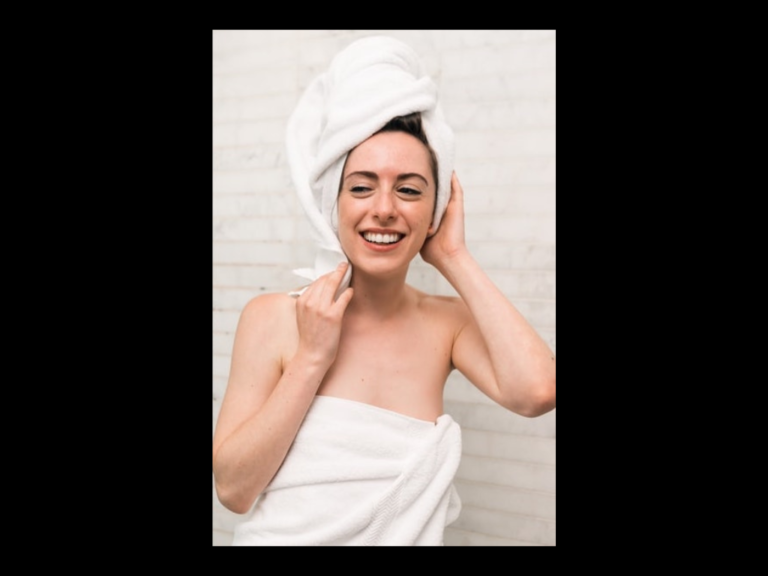
Nice post. I learn something more challenging on different blogs everyday. It will always be stimulating to read content from other writers and practice a little something from their store. Id prefer to use some with the content on my blog whether you dont mind. Natually Ill give you a link on your web blog. Thanks for sharing.
Thank you very much for your comment. I’m glad you found it useful and you learned something new. I agree there’s always something to learn from other writers. Feel free to share the post 🙂
Certainly! If you’re using a spot treatment for acne, incorporating it into your nighttime routine is a common and effective approach.